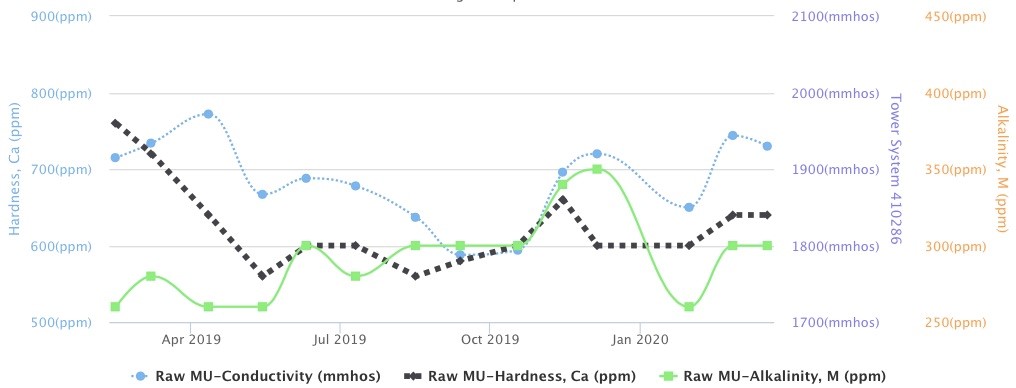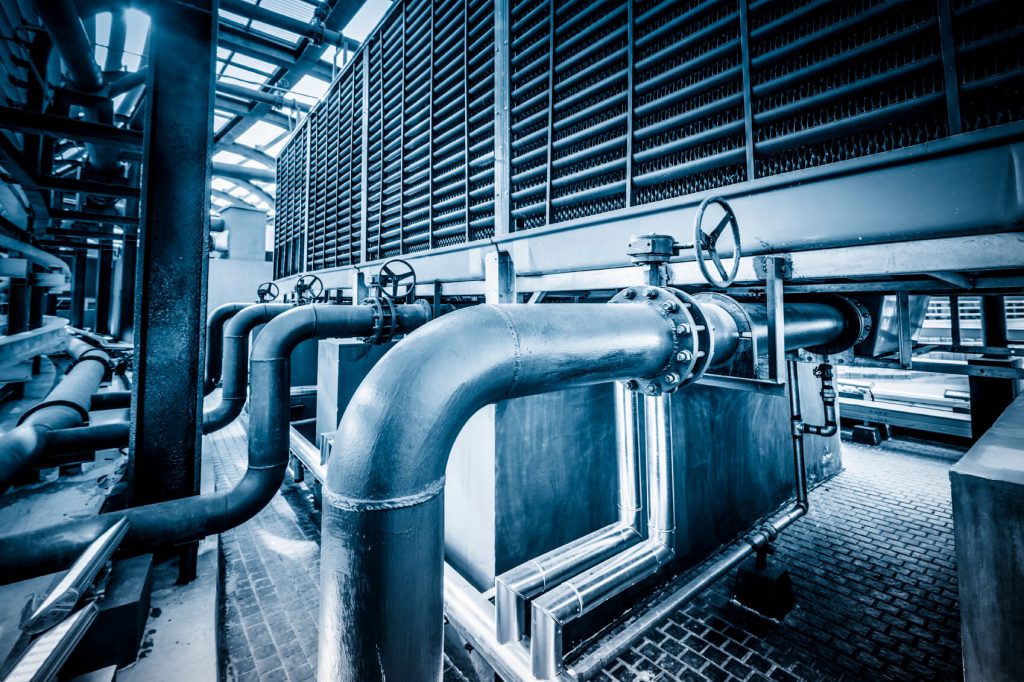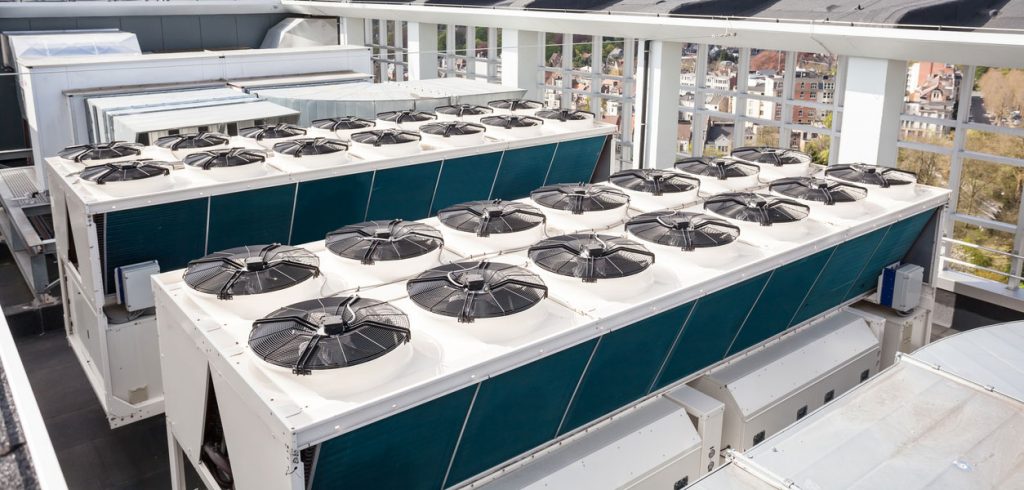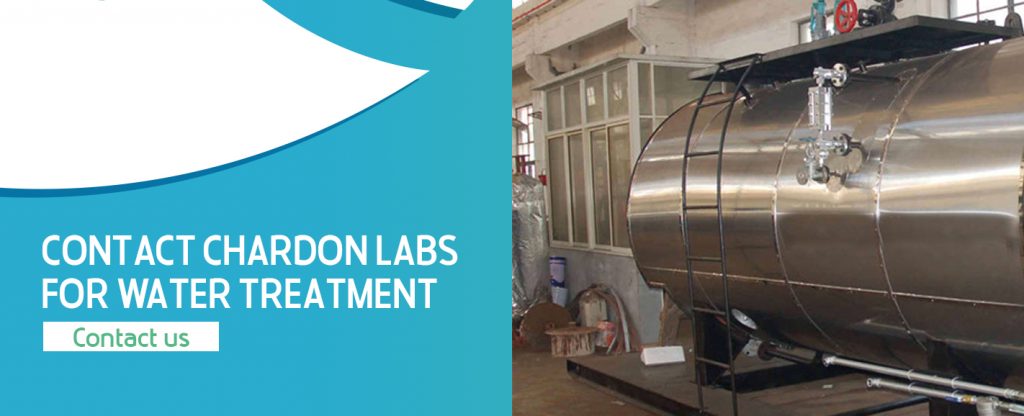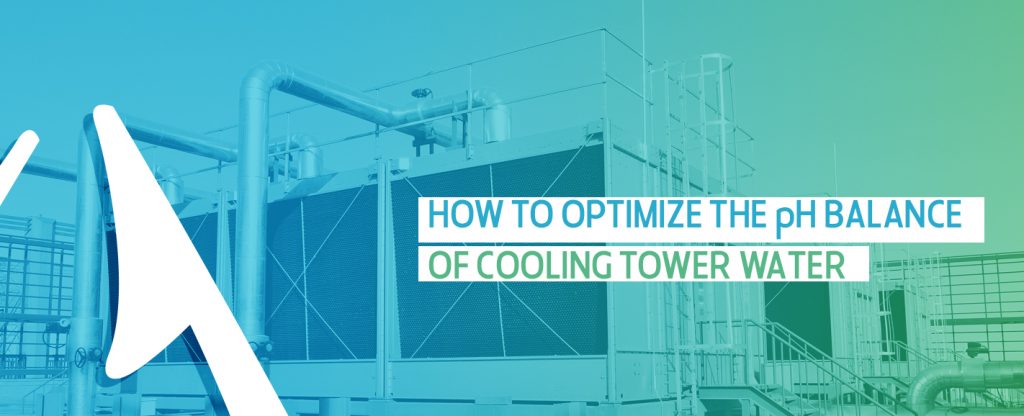
Table of Contents
- What Causes Unbalanced pH?
- Which Water Treatments Work?
- Why Is It Important to Optimize pH?
- How to Balance Cooling Tower Water pH
- Contact Us
So many businesses rely on cooling towers to perform vital services such as air conditioning, manufacturing and electric power generation. But cooling towers also pose several challenges in their upkeep. Chemical control of the water in the cooling tower is critical to your cooling system and the tower's integrity.
Poor pH balance could result in expensive damage or contamination to your system. It can accelerate corrosion and reduce the longevity of your cooling tower and the connected systems. Understanding why cooling towers are a prime source of contamination and how to correct problems will help you preserve your system and protect it from harm.
What Causes Unbalanced pH?
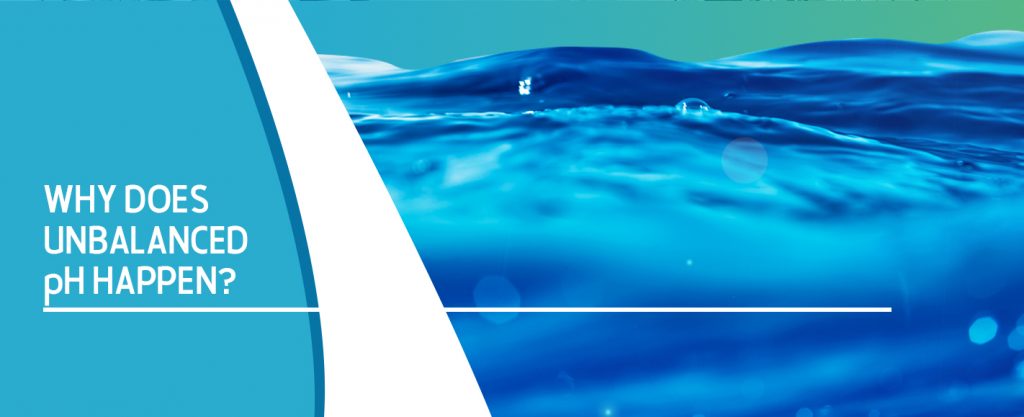
The chemical property known as pH, or "power of hydrogen," refers to the balance of hydronium (H3O+) or hydrogen (H+) and hydroxide (OH-) in an aqueous solution — in this case, your process water. It determines how acidic or basic the water is. The more alkaline — more basic — a solution is, the more hydroxide it contains and the higher its pH. The more acidic the solution is, the more hydronium it contains and the lower its pH.
The pH scale is a logarithmic scale. For every 1 increase in pH, the alkalinity increases by a factor of 10. The neutral pH of pure water is 7. Measurements below 7 correspond to acidic solutions. Stronger acids have lower pH values.
Imbalances in cooling tower pH occur because the water is not pure — it is composed of more than just oxygen and hydrogen. Most process water contains significant concentrations of dissolved minerals, which tend to change the pH of the tower water, often significantly. These minerals can collect and cause scale to form on the cooling tower's internal surfaces.
In cooling towers, the main mineral accumulation is calcium carbonate. This product forms as a result of reactions with calcium, heat and bicarbonate. Calcium carbonate tends to increase the pH of the water, making it more alkaline. Acids like ascorbic acid, hydrochloric acid and sulfuric acid can be used to combat the rise in pH, but they can damage the cooling tower if it contains certain materials.
The allowable pH ranges for different cooling towers vary. The material the tower is made from determines the ideal pH of the water as well as possible treatments against scale and corrosion. Galvanized steel's optimum pH ranges from 6.5 to 9, but type 316 stainless steel has a broader pH range, from 6.5 to 9.5.
Iron, likewise, is highly soluble in water, and therefore subject to corrosion, at a pH between about 9 and 11.5. However, even when a facility maintains pH in the desired ranges, issues can still often develop in the absence of inhibitor treatments.
Other properties of the water, such as conductivity, hardness and alkalinity, also have different target values depending on the tower's material because of potential reactions between the metal and minerals in the water.
Learn More About Our Cooling Tower Services
Which Water Treatments Work and Which Cause Complications?
Water treatment options are not universal for all cooling towers. For example, while using acids to neutralize alkaline water in cooling towers is an option, this may not always be the best course of action.
In one example cited by Power Magazine, when the standard method of reducing alkalinity involved adding sulfuric acid, the carbonate in the water turned into carbon dioxide. To complement the treatment, experts also treated the water with sodium dichromate, which created toxic hexavalent chromium.
Since then, acid treatments have diminished in popularity, replaced by chemical treatment programs. Alkaline phosphates with anodic and cathodic scale inhibitors are often effective. Polymer treatments are also increasing in popularity. We recommend that your facility always get a customized tower water treatment plan for the best results.
Why Is It Important to Optimize the pH Balance of Cooling Tower Water?
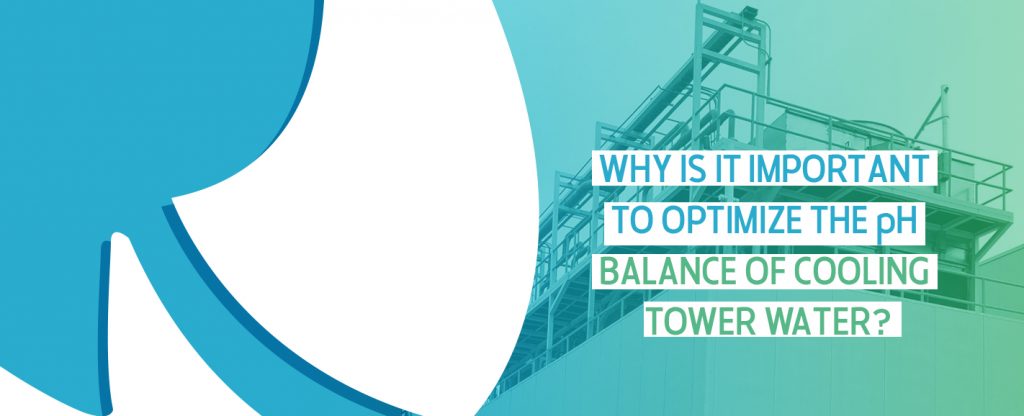
Maintaining balanced pH levels for your tower is critical for preventing scale and corrosion. The ideal pH values depend on the metal the cooling tower is made from, since solubility at specified pH ranges tends to differ for different metals. If you have doubts about the proper pH levels for your tower water, ask your water treatment company for recommendations.
A pH between 6.5 and 7.5 is generally considered the ideal range for reducing scale formation, though some non-acid treatments for scale prevention can increase the cooling tower pH range up to 8.5. The pH also depends on the cycles of concentration (COC). Operating at higher COC allows the tower water to have a higher pH, even up to 10.
Even when your facility maintains the proper pH levels for preventing scale, other problems may arise. For instance, chlorine does not kill microbes as effectively in water more alkaline than a pH of 7.5. For tower water containing microbial life, chlorine may not be the best treatment option, especially if the water has a high pH. Other options are more effective at high pH values — chlorine dioxide, for instance, works well regardless of the pH of the water.
One means of protecting against corrosion in towers made of stainless steel, copper or steel is increasing the pH to 8.5 or above. Raising the COC allows the carbonate concentration in the water to increase, boosting the alkalinity. Though higher alkalinity levels can cause scale formation, they prevent corrosion in certain types of metals and also inhibit bacterial growth.
When the pH deviates from the prescribed range, several undesirable effects may occur:
- White rust: If the pH rises above 8.3 and the water contains a high concentration of carbonate ions, cooling towers made of galvanized steel can develop white rust.
- Aluminum corrosion: With pH values above 8, the chance of aluminum corrosion in a cooling tower increases. The likelihood of corrosion is even higher at pH values above 8.4.
- Iron corrosion: With pH values between 7.5 and 8, iron and iron alloys in the cooling tower can experience corrosion.
- Corrosion from pollutants: Open towers in urban areas have a particular problem with corrosion. The water in the tower comes into contact with the same gases that cause acid rain. These gases reduce the pH of the water and make it more corrosive. Monitoring for corrosion with weighted coupons and balancing the pH of the water can mitigate the effects of having an open cooling tower in a pollution-prone area.
While these problems pose challenges for your facility, they can be controlled and corrected. With careful monitoring and control of the water chemistry, you can balance pH while reducing the chances of corrosion and scale.
What You Can Do to Balance Tower Water pH
Maintaining the ideal pH balance in tower water is a continual process that requires constant vigilance and control. Following all these steps will help ensure the proper pH balance for your facility:
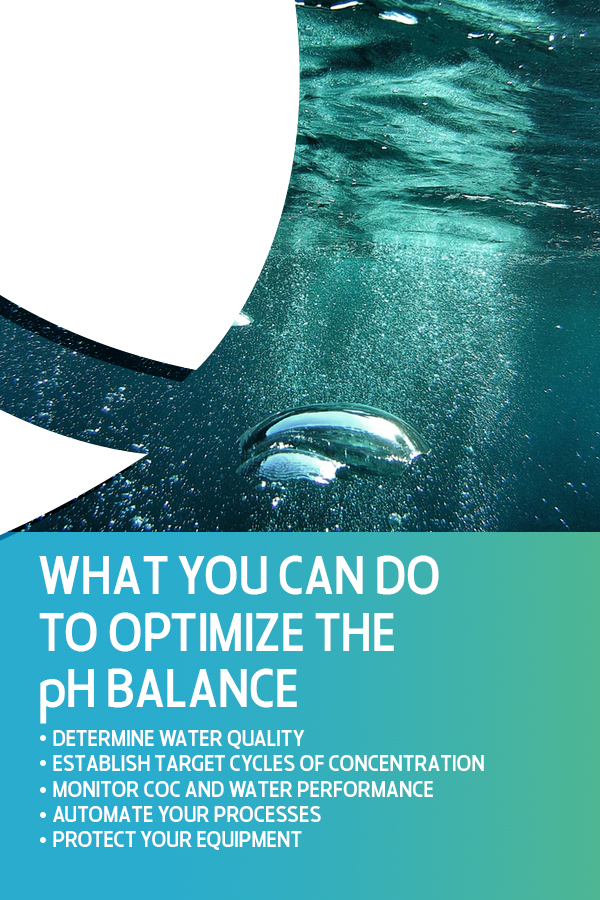
1. Determine Water Quality
Start by measuring the water's pH, alkalinity, hardness and conductivity. These values will establish a baseline for treatment. These properties each play parts in the formation of scale or corrosion:
- pH: The acidity or alkalinity of the water can determine whether scale grows or not. With lower cycles of concentration, scale can form at higher pH values, but higher COC enables you to increase the pH to between 9 and 10. The advantage of such an alkaline pH is its ability to inhibit biological growth and reduce the need for algae and bacteria treatments.
- Hardness: The concentrations of magnesium and calcium ions in process water determine the hardness. Harder water has more of these minerals in it. They tend to solidify and deposit in areas of higher temperature. In a cooling tower, this deposition creates an uneven buildup of scale in warm spots. Towers with especially hard makeup water may be able to operate at only 1.5 or 2 cycles of concentration before scale begins to precipitate.
- Alkalinity: A high concentration of alkaline substances in the water will neutralize any acids added and raise the pH of the water. Carbonate, hydroxide and bicarbonate are the most frequently encountered alkaline minerals in cooling tower water.
- Conductivity: Conductivity is directly related to the concentration of minerals in the water. More minerals can create problems with scale and corrosion. Raising blowdown rates can reduce conductivity. One way of calculating the cycles of concentration is dividing the conductivity of the cooling water by the conductivity of the makeup water.
2. Establish Target Cycles of Concentration
To establish the target cycles of concentration, your facility will need to determine the makeup water quality. The value of the makeup water quality comes from either the company treating your cooling tower water or from your municipality. There are several means of calculating COC, one of which is the following provided by the Environmental Defense Fund (EDF):
- Cycles of Concentration = Makeup Volume ÷ Blowdown Volume
Use this formula to identify the COC your tower currently uses. You can also employ this formula to periodically monitor water use to minimize water waste. Remember, COC and water efficiency are directly linked, so keeping track of COC will help you see if your facility is losing water.
The number of cycles of concentration must carefully balance the need for efficiency and the need to prevent scale formation. More cycles will allow the accumulation of more dissolved minerals in the water, leading to scale and corrosion. Evaporation will do the same. But higher COC will also increase water efficiency. Fortunately, there are ways to improve water efficiency without increasing COC. Depending on the water makeup, you could reuse wastewater from other facility processes in the cooling tower, as long as the water chemistry in the tower remains unchanged.
For better water efficiency, maximize the COC without sacrificing solids accumulation. According to the Office of Efficiency & Renewable Energy, raising the COC from three to six reduces blowdown by 50% and makeup water by 20%. Most towers use between two and four COC. Increasing the COC while keeping the water chemistry balanced can often enable your facility to become more water efficient.
3. Monitor COC and Water Performance
Keep an eye on the chemical balance in your water. Use real-time monitors to get the most accurate, up-to-date information that reflects changes in evaporation and water use. Couple these monitors with automating devices to get the most out of the data you collect. Regular monitoring of your facility's COC and water quality will ensure the ideal pH balance to prevent scale formation, corrosion and bacterial growth.
4. Automate Your Processes
Cut down on the over-application of chemicals to your cooling tower water by installing an automated chemical dispenser that regulates the water chemistry automatically. These devices dispense chemicals to treat the water whenever chemical levels deviate from preset values. These devices maximize efficiency while enabling real-time water monitoring.
Other devices you can use to automate the upkeep of your cooling tower water include:
- Flow meters: These meters can measure the flow of blowdown and makeup lines to reduce water waste.
- Conductivity controllers: Conductivity controllers regulate blowdown. If the tower water exceeds the conductivity setpoint, the controller will release water from the tower.
- Drift eliminators: Drift eliminators are plastic devices that prevent vapor droplets from escaping the tower with the exhaust air. They prevent costly water loss in your system.
- pH monitors: Continual pH monitoring will give you the information you need to determine whether the water treatment methods you're using are working as they should.
5. Protect Your Equipment
Though you may have adequate water chemistry monitoring and automatic chemical controls, you still need to take measures to protect your equipment. Corrosion can occur even in well-controlled cooling tower environments. Use coupons to measure wear rates. Doing so will verify the effectiveness of your water treatment.
Secondly, don't neglect regular inspections and repairs of your tower and all monitoring and chemical control equipment. If your monitoring equipment fails, you will lose the vital data you need to make correct changes to the water chemistry. Also, if the automated systems for controlling flow or conductivity fail, your system will operate below its maximum efficiency.
6. Work With Your Vendor
Once you've established the parameters for balancing your cooling tower's pH, work with your water treatment company. The vendor will have the supplies and methods necessary to get your cooling tower water within the ideal chemical ranges. Communicate all your expectations thoroughly, and don't be afraid to ask questions.
A reputable water treatment vendor will design a customized plan to help you balance pH to prevent corrosion and scale. Since every situation is different, you will need to be ready to answer any questions about your facility and cooling tower. Accurate answers will ensure you get the best water treatment and the ideal water quality to prevent damage to your equipment.
Protecting the water in the tower from contamination will also protect the rest of the system. Because cooling towers have external exposure, they are the most significant source of water contamination for water systems. Treating the water in your cooling tower for pH can prevent problems like rust and corrosion in the entire system.
Contact Chardon Labs for Water Treatment
Water treatment is just one of the many services we offer at Chardon Labs. We provide the means to keep your cooling tower water chemically balanced. We do much more than sell chemicals — our job is to create clean systems for our customers. We are happy to create a custom treatment plan tailored to your water and cooling tower design.
If you want your facility to have a cleaner cooling tower, contact the water treatment experts at Chardon Labs. We will discuss your facility's needs and use the information you provide to develop the best solutions for maintaining a proper pH balance in your cooling tower water. Using water with a balanced pH will prevent problems and extend the life of your cooling tower and connected systems. We look forward to assisting you.

Matt Welsh
Matt Welsh is the Vice President and Water Consultant at Chardon Labs. He helps consult a wide range of customers utilizing various methods of water treatment, from chemical to chemical-free approaches, large and small applications, and across a wide range of geographical influences. With 20 years of water treatment experience, including a wide range of troubleshooting and service in potable water and non-potable HVAC and industrial applications, he is an expert in water treatment chemistry for cooling towers, boilers, and closed-loop systems.

